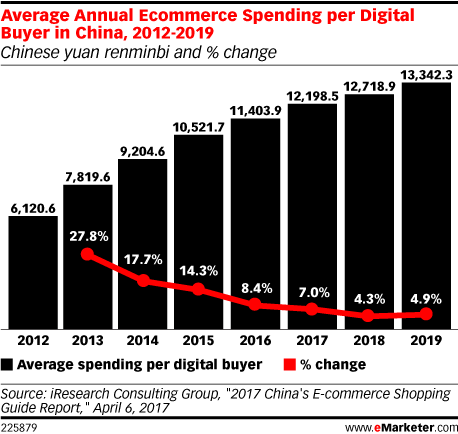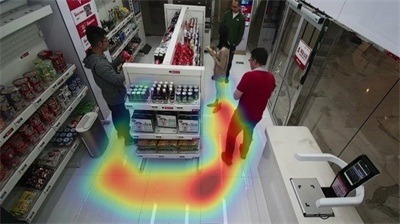
Image credit: Pexels.
One trillion dollars. That’s how much Chinese consumers are on track to spend online by the end of this year – about half of the ecommerce market worldwide. But in China, that’s less than a quarter of all retail sales. No wonder the country’s largest ecommerce giants, JD and Alibaba, are gunning for the brick-and-mortar sector.
Over the past year, both companies have ramped up efforts to expand their empires offline – without taking on the burden of owning and setting up physical shops around the country. For JD and Alibaba, the battle offline is about data.
“In China, we are ready for conversion of both [offline and online] – this is ‘new retail,'” said Stéphane Rinderknech, CEO of L’Oreal China, at a pre-Singles Day event organized by Alibaba on Tuesday. “It’s a collaboration around data, the data being the consumer.”
“New retail” has been Alibaba’s slogan all year, a catchphrase meant to emphasize the integration of online and offline retail. In a nutshell, it means tracking customers wherever they’re shopping – on their phone, in a physical outlet, or even via smart speaker. JD calls it “borderless retail.”
By following shoppers no matter where they are, Alibaba and JD aim to know China’s consumers – and what triggers them to buy – better than any company in the world.

Alibaba’s grocery store Hema is supposed to epitomize “new retail” with both online and offline features: in-store dining and cooking, online delivery, mobile payments. Each Hema store is also a fulfillment center. Photo credit: Tech in Asia.
The traditional retail industry has seen its market share decline as consumers increasingly opt for shopping online. Last year, China’s largest shopping holiday Singles Day broke its record yet again, pulling in US$17.7 billion.
However, at the same time, overall growth in the ecommerce industry has steadily slowed since 2013. Chinese consumers are also growing savvier and more sophisticated, making physical experience centers and in-store service more important than ever.
Because JD and Alibaba are dominant, retailers don’t have a choice. If you’re not in it, you’re going to miss out.
To expand their role in the offline shopping experience and drive more sales, both JD and Alibaba are wooing brands with a variety of tech-driven services, including location-based inventory management, precision marketing, and even facial recognition-based payment systems. Winning over retailers will be paramount as data-sharing goes both ways – though to be fair, brands don’t have many alternatives.
“No retailer wants to be on another channel that they can’t control and forced into heavy marketing competition,” says Sicheng Peng, president of APAC for 7thonline, which helps apparel brands in China with inventory management and optimization analytics.
But in China, “because JD and Alibaba are dominant, retailers don’t have a choice,” he says. “If you’re not in it, you’re going to miss out.”

Slowing ecommerce spending growth in China. Image credit: eMarketer.
Retail as a service
As tech companies, Alibaba and JD have a lot to offer brands. They have their own enormous cache of customer data, from spending habits to where customers receive packages – often their workplace or home. Localizing what products stores should stock and advertise is a tangible contribution ecommerce firms can offer.
They’re also rolling out their own respective “smart store” solutions for retailers. JD is testing an unmanned store concept at its Beijing headquarters, which uses RFID tags and facial recognition to enable cashier-less convenience stores. Cameras on the ceiling would also give retailers heat maps of their store to track what products customers select and prefer.
Both Alibaba and JD want to help stores optimize their current stores too. For mom-and-pop shops with over US$1,500 in monthly merchandise volume, Alibaba offers help with speedy one- and two-day deliveries, product demand prediction, and even microloan financing. JD has also developed “smart shelves,” which use a combination of weight sensors and cameras to track what products shoppers pick up off the rack.
“To put it simply, we’re finding all data that has to do with people – their behavior, what they like, what they buy – and binding this online data to real people,” Chris Tung, chief marketing officer at Alibaba, told media at Tuesday’s launch event. The goal is to find the right consumers for each brand – and trace them throughout Alibaba’s system.

A heatmap generated of JD’s unmanned convenience store. Image credit: JD.
To be sure, it’s too early to tell what impact these smart store solutions will have on brick-and-mortar sales. In particular, some features seem gimmicky, like sensor-triggered displays that play product demos every time someone picks up a certain item (JD calls this feature “Take”; Alibaba calls them “cloud shelves”).
“Honestly, I think that’s part of the game – to get a lot of media coverage for these new technologies, even though they are not well-implemented, even though the difference is light,” Matthieu David-Experton, CEO of Daxue Consulting, tells Tech in Asia. “Are people going to go to the shop just because they can pay with facial recognition? It seems doubtful.”
Are people going to go to the shop just because they can pay with facial recognition? It seems doubtful.
However, in the long-term, this technology could potentially improve stores’ bottom lines by helping them optimize their inventories and increase the convenience of shopping, he says.
Heat maps of customer movement could also help boost in-store experience, adds Peng. “It’s a very good way to capture lost opportunity within the store.” In huge multi-level stores like Uniqlo, customers might get frustrated with searching for products. Heat maps can pinpoint locations where employees should be stationed to guide shoppers, he explains.
Advertising or ecommerce?
On the data side, both companies are hoping to combine forces with offline retailers. That not only lets all parties track customers more continuously online and offline, but it also means coupons, discounts, and memberships will be consistent across platforms.
Sharing data will also help brands refine their advertising spend, which is one of the main ways Taobao makes money. In fact, Alibaba captured the largest share of China’s digital advertising market in 2016, beating out search engine giant Baidu. As an advertiser, the company is incentivized to gather more data about shoppers and funnel it back to brands.
“Category, brand, merchant, store, product performance are easily accessible and overlaid with valuable consumer data [on Tmall and Taobao]. We have ready access to competitive intelligence that would be the envy of any Amazon reseller or Google Adwords user,” says
Josh Gardner, CEO of Kung Fu Data, a data analytics firm in China that helps foreign brands optimize marketing and operations on Tmall, Taobao, and JD.

One of JD’s experience centers in Shanghai. Photo credit: Tech in Asia.
JD’s approach has been to partner aggressively with various tech company allies, like Tencent and gaming giant NetEase – who recently entered the ecommerce space a few years ago.
In collaboration with Tencent, for example, JD is working to improve ad targeting on WeChat Moments, the app’s newsfeed. Instead of classifying WeChat users by their behavior on the app, brands can also segment them by their purchasing habits on JD.
JD has been partnering aggressively with various tech company allies, like Tencent and NetEase.
In October, the two firms took their partnership a step further by looping in offline data from select brand partners (none of whom have been disclosed yet). Specifically, customers that are store members can be tracked both online and offline, with their phone number serving as a unique identifier throughout the different platforms.
“In more than three years since we began leveraging our Tencent partnership, about a quarter of first time users have come from WeChat and Mobile QQ, demonstrating the power of the cooperation,” stated Lei Xu, chief marketing officer at JD, in the press release.
Of course, China’s mammoth retail market is big enough for two companies, even multi-billion corporates like JD and Alibaba. Partnering with brands on data or smart stores won’t be exclusive either. For retailers, it makes sense to obtain as much intelligence as they can about their customers – indeed, that part of commerce has never changed.
“The overall theme is every channel is important,” says Peng. Though Alibaba calls it ‘new retail,’ the industry has been saying the same thing for the past 10 years. “But coming from these big huge winners in the ecommerce space, people are starting to understand it more.”
Currency converted from Chinese yuan: Rate: US$1 = RMB 6.63.
This post How Alibaba, JD are expanding their empires offline by offering data to retailers appeared first on Tech in Asia.
from Tech in Asia https://www.techinasia.com/alibaba-jd-strategy-break-into-offline-retail
via IFTTT
No comments:
Post a Comment